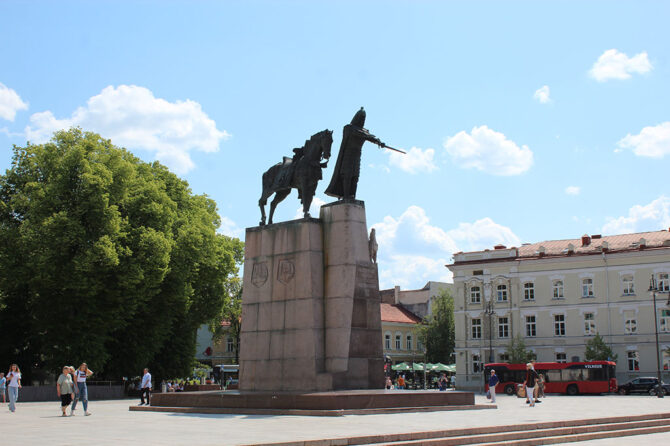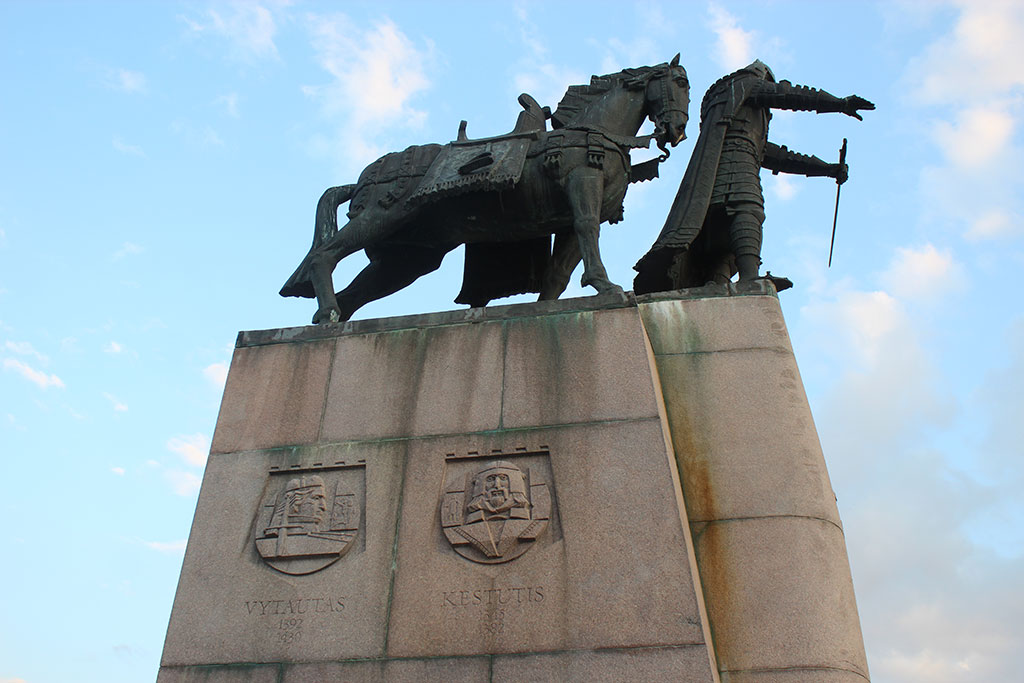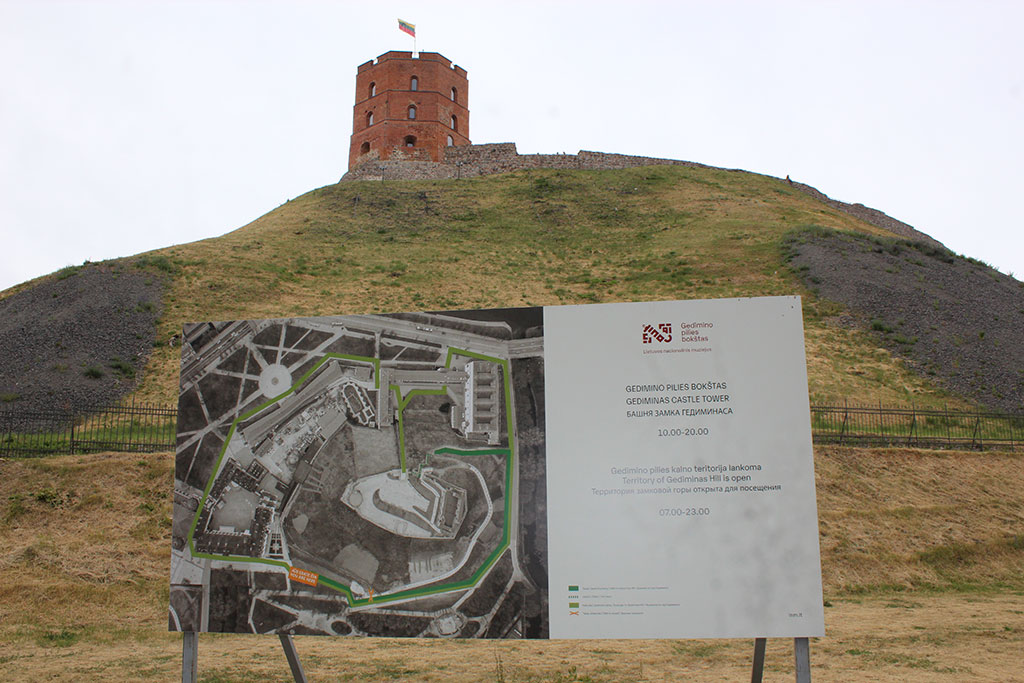
In the medley of history, where legends intertwine with reality, the stories of visionary rulers like Grand Duke Gediminas of Lithuania and Mathi Thimmanna Nayaka of the Nayaka dynasty in Chitradurga, India, stand out as striking parallels. As a traveller seeking to unravel the mysteries of the past, I embarked on a journey that transcended mere geography. It was a voyage through the annals of strategic brilliance, a quest to understand how visions and dreams shaped the destinies of nations.
In the ethereal twilight, standing at the base of the Lithuanian mountain where Gediminas once hunted, I was instantly reminded of our own ancestor, Mathi Thimmanna Nayaka. Both these leaders had unusual dreams that led them to establish great dynasties. Gediminas dreamt of an iron wolf howling atop a mountain, a vision that prompted him to found Vilnius. Similarly, Mathi Thimmanna Nayaka, inspired by a dream where a hare chased a wolf, established the famed Nayaka dynasty known for its bravery and people-centric rule.

In Vilnius, I found myself before the talking sculpture of Grand Duke Gediminas. This bronze marvel, depicting the duke with a sword in one hand and blessing the city with the other, stands near a horse, facing the Cathedral Bell Tower. A blue table attached to the sculpture’s pedestal invites visitors to listen to its story. Scanning a QR code, I was transported back to the time of Gediminas, who lived from 1275 to 1341 and ruled the Grand Duchy of Lithuania for 25 years. He was a diplomat par excellence, drawing Europe’s attention to Lithuania, and under his reign, the territory of Lithuania doubled.

The strategic acumen of Gediminas was mirrored in the actions of Mathi Thimmanna Nayaka. In the early 1560s, Timmanna Nayaka, a ruler known for his audacity, was attacked by a Vijayanagara force for raiding neighbouring territories. In an act that showcased his bravery and strategic ingenuity, Timmanna Nayaka decided to steal the horse of the Vijayanagara prince commanding the forces against him. His escapade, which involved cutting off his hand to free himself from a tether peg driven through it by a groom, resulted in the Vijayanagara army suing for peace, unable to defeat such a formidable adversary. This event not only marked his tactical prowess but also led to his brief appointment as the governor of Chitradurga.
As I walked the cobbled streets of Vilnius, where Gediminas expanded the boundaries of his kingdom and laid the foundations of a prosperous city, I pondered upon the strategic similarities between him and Mathi Thimmanna Nayaka. Both rulers understood that the mission and objectives of their reign, the scope of their activities, their approach to gaining competitive advantage, and the importance of having an action plan were crucial elements in their strategic thinking.

Their understanding of strategy reflects what is vital in modern business activity. A clear mission, well-defined objectives, understanding the scope of activities, and an approach to gaining a competitive edge are key elements in strategic thinking. Both Gediminas and Nayaka had an inherent grasp of these principles.
Gediminas’ strategy was rooted in diplomacy and expansion. He knew the importance of making Lithuania known to Western Europe, which he achieved through his famous letters in 1323, first mentioning the name of Vilnius. These strategic communications marked the beginning of Vilnius and exemplified his vision. Similarly, Mathi Thimmanna Nayaka’s strategies were bold and often unorthodox. His daring act against the Vijayanagara prince was more than just an act of bravery; it was a strategic move that altered the course of his confrontation with a much larger force.

Both leaders’ strategies were not just confined to military tactics or political manoeuvres. They extended to how they built and governed their lands. Gediminas’ decision to move the capital from Trakai to Vilnius was a strategic move that led to the city’s development and prosperity. Likewise, Mathi Thimmanna Nayaka’s governance was marked by a focus on the welfare of his people, a strategy that endeared him to his subjects and ensured the stability of his rule.
Their stories also highlight the importance of an action plan in implementing a strategy. Gediminas didn’t just dream of a great city; he built it. His actions following his vision led to the establishment and expansion of Vilnius. Similarly, Mathi Thimmanna Nayaka’s response to the Vijayanagara attack was not just a spur-of-the-moment decision; it was a calculated move, a part of his broader strategy to deal with his adversaries.

In addition, their decision-making provided guidance on priorities for resource allocation. Gediminas strategically utilized his resources to expand his territory and strengthen diplomatic ties. Mathi Thimmanna Nayaka, despite his eventual tragic fate, showcased resourcefulness, especially in his daring escapade, which demanded not just courage but also a strategic allocation of his limited resources.
As my journey continued, I realized that the stories of Grand Duke Gediminas and Mathi Thimmanna Nayaka are not mere historical narratives. They are powerful lessons in strategic thinking and leadership. Their legacies, etched in the monuments and the annals of history, continue to inspire, proving that with the right strategies, vision, and courage, one can shape history and leave an enduring impact.

In retracing the footsteps of these legends, I discovered that strategic thinking transcends time and geography. Whether it’s leading a dynasty, governing a nation, or steering an organization, the principles of strategy remain as relevant today as they were centuries ago. Their stories remind us that legends may fade into the mists of time, but the lessons they impart, especially in the sphere of strategy and vision, remain timeless.
Prof. Dr. Prahlada N.B
29 October 2023
Dubai International Airport, Dubai, UAE.

















Prahlada Sir 💐
Though transcending time & geography…..
Very nice parallel, drawn by you…between visionary ruler of Vilnius, Lithuania 🇱🇹, Gediminas & our own fort city’s , Mathi Thimmanna Nayaka 👌🏿
While Gediminas, had a strategy & diplomacy….in expanding his kingdom, in 13th& 14th centuries….
Our own fort city , Chitradurga’s Mathi Thimmanna Nayaka , had same strategic skills & had made formidable Vijayanagar empire Ruler & Prince ….to bow & bend before him,during the middle of 16th Century !
So , both Gediminas & Mathi Thimmanna Nayaka , had vision , definite plan of action , & hence won in their mission . Like wise ….
In today’s world ….
“ To attain success in any field , one should have a plan of action , perseverance & execute it as per the envisaged plan “ 👌🏿
Our fort city’s legendary writer, BL Venu Sir, will be happy..to read this parallel valour story 😎🤩🤔
Reply